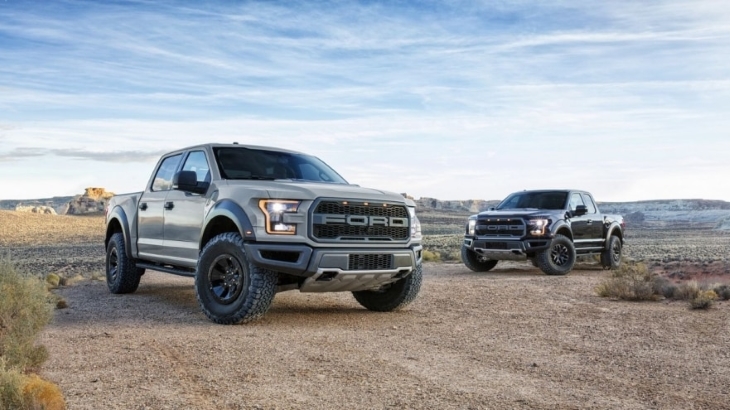If you’re looking to upgrade your vehicle, regardless of whether it’s to make it more off-road capable, overall more comfortable or up its performance abilities, you’re probably looking at aftermarket parts. Aftermarket parts, unlike OEM parts, are manufactured by third-party manufacturers rather than the same company that manufactured the vehicle. A lot of people are wary of aftermarket parts, but that shouldn’t be the case, as long as you’re shopping from a known brand. Aftermarket 4wd performance parts can be just as good, if not better than OEM parts. That being said, let’s discuss what the pros and cons of both aftermarket and OEM parts are, and what you should pay attention to when buying to ensure you make the right buying choice.
Aftermarket Parts
As briefly aforementioned, 4wd performance parts are sourced from a manufacturer that isn’t the car’s maker. The parts can be direct replacement parts, or they can require slight modification to your vehicle. If they’re direct replacement parts, they will not void your car’s warranty, which is something most people are concerned with when buying aftermarket parts. Most aftermarket manufacturers design the parts to function more or less the same, or in some cases, much better than the original, hence why they’re called performance parts. If you’re servicing or upgrading your vehicle in an independent shop, chances are you’re getting aftermarket parts. For that reason, it’s important you’re an informed consumer who has done enough research and shopping around to ensure you’re dealing with a great mechanic who uses high-quality aftermarket parts.

Pros of Aftermarket Parts
- More Affordable – Aftermarket parts are typically more affordable than OEM parts. By how much? It depends on the brand, so it’s important to shop around and get an idea of how much that part typically costs. If the price is too good to be true, it might be of poor quality.
- Equal, or Better in Quality Than OEM – In some cases, aftermarket parts are much better in terms of performance than OEM parts. Aftermarket manufacturers reverse-engineer parts, and they don’t make them with money-saving in mind. In other words, OEM parts may be made of cheaper materials so that the overall price of your vehicle is more competitive, whereas aftermarket parts are typically made of high-quality materials. For instance, you may have semi-metallic brake pads, which perform well, are quite durable and produce low noise, but you’re interested in ceramic brake pads, which perform better in all aspects, which is why they’re used in sports cars and heavier vehicles.
- More Choice – There are hundreds of aftermarket parts manufacturers in Australia alone. Some of them specialise in specific parts, such as exhaust systems, for instance, whereas others manufacture almost any vehicle parts. This makes it so there’s tons of competition and thus, better prices for consumers.
- Availability – You can visit your local mechanic, gas station or local auto parts store and chances are, they’ll have what you need.
Cons of Aftermarket Parts

- Quality Can Vary – You get what you pay for. Some aftermarket parts can be inferior to your OEM parts, as they’re manufactured using lower-quality materials. As aforementioned, try sticking to brands you’re familiar with. If you aren’t familiar with any, look them up online, ask your friends or local mechanic. Chances are, those parts will cost slightly more, but you can almost always expect quality and longevity.
- No Warranty – Some aftermarket parts manufacturers sell their products without a warranty to keep prices competitive. However, most reputable brands will still provide a warranty.
- Too Much Choice – If you aren’t car-savvy, you might run into trouble making the right choice. Even something as simple as a spark plug can come in too many shapes and sizes, making the choice overwhelming.
OEM Parts
OEM parts, or Original Equipment Manufacturer parts, are parts made by the same company that manufactured your vehicle. These parts are precisely the same parts you’re trying to replace. As such, you can expect a seamless fit.
Pros of OEM Parts
- Easy to Choose – It’s as simple as going up to the dealership and asking for the part you need. They’ll probably have the exact part you’re trying to replace, and you won’t have to think about things like brands, prices and quality.
- Guaranteed Quality – OEM replacement parts work exactly the same as the faulty parts you’re replacing. They’re compatible with your vehicle and are extremely easy to install.
- Warranty – Most, if not all OEM replacement parts will come with at least a one-year warranty. Plus, if you get the part replaced at the dealership, you probably won’t have to pay anything either.

Cons of OEM Parts
- Expensive – OEM parts are almost always more expensive than aftermarket parts. Generally, you can expect to pay about 50% more. This is due to the fact that there’s a bigger burden on the parts and services to increase profit.
- Must Buy at Dealerships – Although OEM parts are also available online, most people still go to the dealerships. This may have to do with the fact that dealerships also install the parts. If you order an OEM part at your local mechanic, you’ll have to wait for the part to reach the mechanic before they can do the replacement for you.
- Quality May Still Be Inferior – You paid more money for an OEM part thinking it performs better than an aftermarket part. But that’s not always the case. As aforementioned, some aftermarket parts are equal if not better in quality than OEM parts.


















